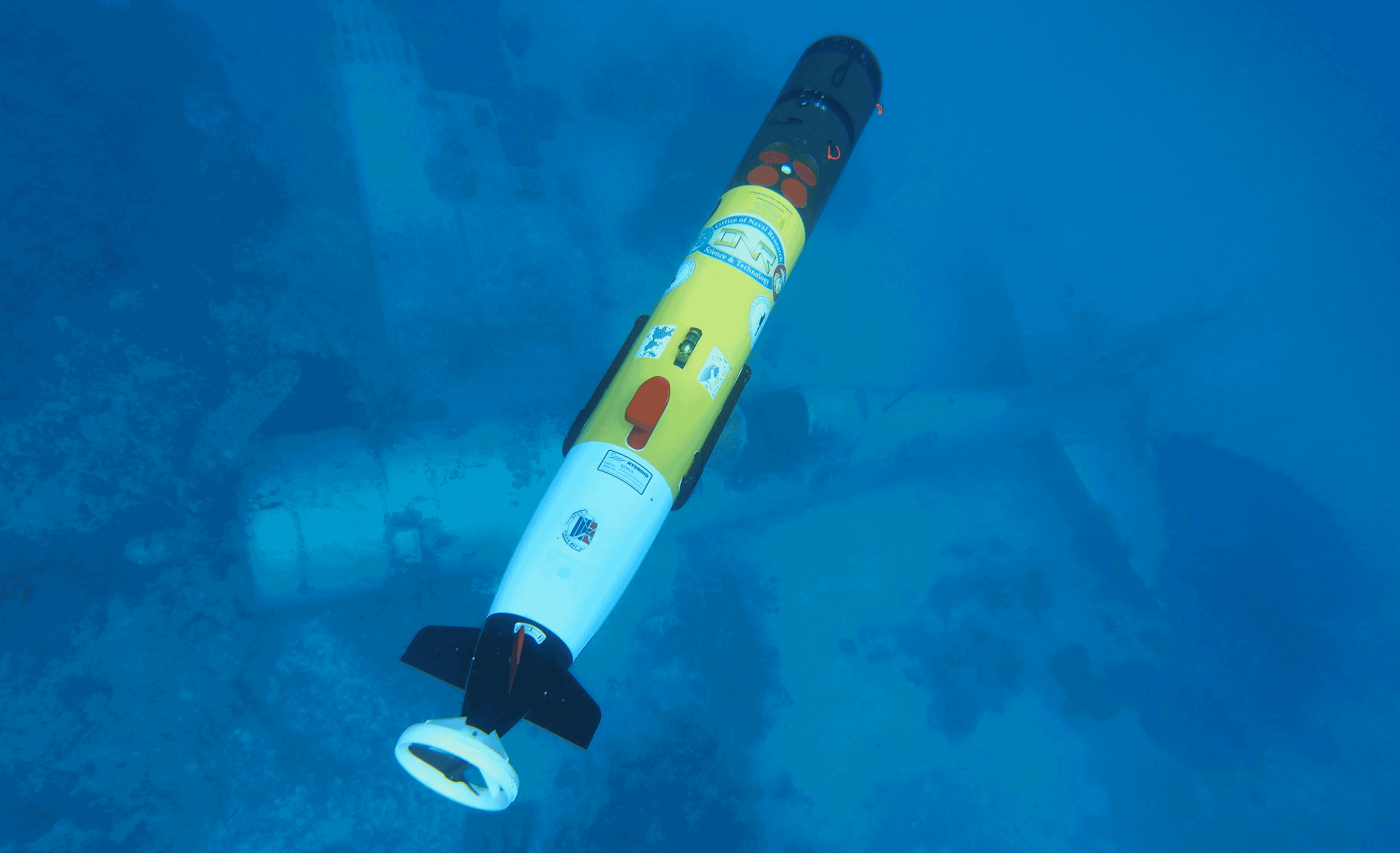
Nov. 7, 2014 — Project Recover locates its first WWII Aircraft in partnership with SCRIPPS Institution of Oceanography and University of Delaware’s College of Earth, Ocean, and Environment and is the subject of a film by camera maker GoPro and the CBS news magazine “60 Minutes.”
Supported by a grant from the Office of Naval Research, Scripps Institution of Oceanography, UC San Diego, oceanographer Eric Terrill and Mark Moline from the University of Delaware have teamed up with the nonprofit group BentProp Project in a public-private partnership to bring closure to families that have waited for several generations for final word on the fate of their loved ones. At the same time, the project provides a test bed for developing underwater search technologies and methods, and is a platform for inspiring public interest in science and engineering.
Earlier this year, the team logged a major success during a month-long expedition in the Republic of Palau, finding the wreckage of two U.S. aircraft that were associated with airmen that have been listed as missing in action since World War II.
“This program has been a rewarding opportunity for the chance to recognize the sacrifices our servicemen have paid and give back to families who have lost loved ones,” said Terrill. “It is rare in scientific research to be involved in activities that will have direct personal impacts; our participation and successes in this effort have been humbling.”
“I applaud Scripps’s efforts, in conjunction with the BentProp Project, University of Delaware, and GoPro, to help locate the remains of our missing airmen and sailors,” said U.S. Representative Susan Davis, a member of the House Armed Services Committee. “We have a responsibility to locate those who are missing and remain unaccounted for, and return them home to their families and loved ones. As Congress and the Department of Defense identify ways to more effectively locate those who are missing in action, I hope we can look to creative partnerships like this to bring closure to the families of these service members.”
A Chance Meeting leads to Project Recover
Since 2010, Moline and Terrill have used sophisticated technology to study and model the complex flow of water around the coral reefs, lagoons and islands of Palau, funded by the U.S. Office of Naval Research (ONR). The researchers make annual field expeditions to examine currents, large-scale eddies and tides’ impact on water movement. The hydrodynamic research also focuses on the impact of super-typhoons on beaches and coral reef environments. Scattered among the lagoon waters and coral reefs surrounding Palau’s island chain, and concealed within its dense mangrove forests, are believed to be several dozen U.S. and Japanese aircraft and the remains of perhaps as many as 80 U.S. airmen.
The mission began in 2012 after an introduction by local scientist Pat Colin of the Coral Reef Research Foundation at a popular meeting spot in Koror, Palau’s main city, and brought together the science mission with that of Pat Scannon, BentProp’s founder. Scannon had become interested in searching for MIAs after a 1993 dive trip through the country’s islands.
“I was told there’s a really cool guy over there with all these cool toys,” said Scannon in reference to Terrill. “This really is a partnership where there’s integration with our search mission with Eric’s technological and oceanographic capabilities. It’s a two-way street. We’re able to advance what we’re trying to do in terms of our search and they’re learning more about the technology aspects of working in interesting and complex settings.”
As they compared projects, Moline and Terrill realized that the underwater robotics technology used for their scientific work could significantly improve BentProp’s search efforts, and established Project Recover, with support from ONR.
The instruments used by Terrill and Moline turned out to be perfect for the kind of seafloor surveys needed to search for missing aircraft in the lagoon waters of Palau and complemented BentProp’s exhaustive review of World War II text and photo archives. These historical records, along with interviews of veterans, have proven invaluable for providing clues to guide the searches.
“About the time that we realized we were at the limit of our capabilities, we met the folks from Scripps and University of Delaware. Their technology changed everything,” said BentProp founder Patrick Scannon.
The collaboration led to the discovery of two long-lost planes earlier this year.
Technology
The AUVs used by the groups, known as Remote Environmental Monitoring UnitS (REMUS), were actually developed by colleagues of Terrill and Moline’s at Woods Hole Oceanographic Institution, but now commercially manufactured by a spin-off company called Hydroid. The systems are equipped with side-scan sonar that can image the seafloor with great detail. Scripps engineers Billy Middleton, Myles Syverud, and Andy Nager are experts at running the vehicles, and adept at rapidly analyzing the data for wrecks – distinguishing metal debris from natural seafloor relief. Multi-rotor aerial systems deployed by Terrill’s group are used to conduct aerial surveys over land and shorelines and also provide a bird’s eye view of dense island foliage that enables detection of the wreckage. This year, Scripps engineer Evan Walsh integrated an infrared camera into the aerial system to provide aerial maps of temperature differences. A huge challenge to all the new technology is the fusing of information. Fortunately, said Terrill, Scripps computer scientist Paul Reuter remains at the cutting edge of handling and visualizing large data sets and integrating 70-year-old reconnaissance photographs into the search analysis.
- Shannon Scott diver – surveying an underwater aircraft
- Technology Demonstration
Inexpensive GoPro cameras are mounted to nearly all the science instruments used by Terrill’s group, contributing directly to research and providing the raw material for video outreach which has been incorporated into Project RECOVER. Scripps engineer Shannon Scott even integrates the cameras with the handheld diver sonar he uses when reconnoitering underwater targets revealed by the vehicle surveys.
The data collected provided scientifically valuable information and even captured footage of a Japanese Kawanishi airplane, one of only a handful produced. While the sighting demonstrated the AUV’s capabilities, it was not the aircraft they were looking for.
Moline and his BentProp colleagues returned to the case files on particular airmen and incidents of missing aircraft, combing the documents in search of clues. Moline stumbled upon a document that named a small bay where, coincidentally, BentProp previously had discovered the wing of a U.S. TBM Avenger.
The group narrowed their search area and in March 2014, the AUVs found the remainder of the Avenger bomber, which had been missing in action for 70 years. A few days later, sonar images helped reveal a second aircraft, an F6F Hellcat, in a second location.
“It was an exciting time, but also a solemn time because you know there are potentially servicemen still in the plane,” said Moline, who attributes the discovery to the combination of BentProp’s historical knowledge of the area and archival records, and the advanced robotics technology provided by UD and Scripps.
GoPro Filming
GoPro cameramen filmed a portion of search operations and used the searchers’ own footage to create the 13-minute film “Palau – Searching for Heroes.”
“We are honored that GoPro is part of this effort to search for and recover missing airmen from World War II. We are always interested in learning how our cameras are used for more than just documentation, to see and learn how the GoPros are used as a tool to complement the sonar technology is very inspiring,” said GoPro Director of Global Media Relations Rick Loughery. “Personally, this was an amazing experience for me and I am proud that GoPro is able to support it and hope that our video will create more awareness for the noble efforts put forth by the BentProp Project, Scripps Oceanography, and the University of Delaware.”
“It’s something very special that feels nearly surreal,” said Travis Schramek, a Ph.D. student in Terrill’s lab who has taken part in the search fieldwork and whose footage appears in the film. “These problems are not easily solved and can get pushed by the wayside, but this shows that when people get together, they’re capable of accomplishing something truly unique and people like that coalesce around places like Scripps and the University of Delaware.”
Repatriating MIAs
The discoveries start the process of repatriating the MIAs through proper government channels. Information about the wrecks’ locations has been shared with the U.S. military, which will review the cases and determine whether servicemen’s remains can be returned to the United States — which is outside of the scope of the researchers’ and BentProp’s roles.
“We don’t disturb the wrecks at all,” said Hunter Brown, who manages UD’s fleet of a half-dozen underwater robots.
Brown and Megan Cimino, a UD oceanography graduate student, ran many of the AUV missions in Palau and scoured through hours of footage at the end of long days of fieldwork.
“You put so much time into doing these operations every day, and to actually find something … it was really rewarding,” Cimino said.
BentProp gave detailed information about the two discovered planes and possible links to airmen listed as missing in action to the Department of Defense’s Joint POW/MIA Accounting Command, which may undertake recovery efforts next year. When JPAC’s work is complete, these will be the first successful recoveries involving this newly formed partnership. If remains are returned to loved ones, and if Scannon is present for the encounter, he has an idea of what to expect from his previous experiences.
“An MIA family never forgets,” he said. “When I walk into a home, there’s often still a shrine. A second- or third-generation family member can still feel the loss very strongly because they never knew them.”
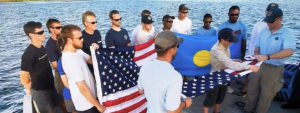
Flag Ceremony – Palau
Full Circle
The University of Delaware’s Mark Moline knew that his grandfather, O. Karl Olander, was a Navy chaplain in the Pacific during World War II. But it wasn’t until his mother shared his grandfather’s journal and scrapbook that Moline realized his grandfather had been on the USS Princeton, one of the aircraft carriers that attacked Palau in March 1944. “I felt connected to BentProp’s mission, but having the journal made the connection that much stronger,” explained Moline.
For Moline, the work in Palau that started — and continues — with a scientific focus also has become personal. His grandfather’s scrapbook includes notes about an airman who went missing from the ship. BentProp is aware of the serviceman, and collectively they have been trying to find him over the last 20 years.
The next search season begins in March 2015 and Moline is ready, armed with a high priority list and a sequence of 12 specific searches. While the “Hollywood ending” to the story would be to aid in the recovery of the airman mentioned in his grandfather’s journal, Moline is firm that this is not the mission.
“BentProp believes there are about 70 MIAs that are recoverable from nearly two dozen aircraft downed in Palau. We look forward to continuing the work to bring these servicemen home,” he said.
In a story propelled in large part by chance, one of the two warplanes discovered earlier this year turned out to have a personal connection to Terrill. It was constructed in a Tarrytown, N.Y., General Motors factory at which Terrill’s grandfather served as the paint and body manager. Terrill was unaware of the family connection to plane production until talking with his father a few days prior to departing for the last expedition, and learning that during the wartime effort, the Navy called upon General Motors to support Grumman in the production of the much-needed and versatile torpedo bomber.
When he dived to the wreckage, he became the second person in his family to study the plane, separated by a span of more than seven decades.
“With details from the missing plane’s After Action Reports recorded during the war, we were able to place the plane’s production in the same plant that my grandfather worked as the paint and body manager, I learned he would have inspected all bodywork coming from the plant.”
BentProp gave detailed information about the two discovered planes and possible links to airmen listed as missing in action to the Department of Defense’s Joint POW/MIA Accounting Command, which may undertake recovery efforts next year. When JPAC’s work is complete, these will be the first successful recoveries involving this newly formed partnership. If remains are returned to loved ones, and if Scannon is present for the encounter, he has an idea of what to expect from his previous experiences.
About the Partnership
BentProp Project is a group of individuals and entities that have come together to solve the problem of the 83,000 Americans considered officially missing in action by the Defense POW/Missing Personnel office. The group includes volunteers, scientists, and engineers dedicated to this mission.
Founded by Patrick Scannon, the BentProp team has grown to include public-private partnerships with the Scripps Institution of Oceanography, the University of Delaware and the government of Palau, as well as interactions with several U.S. federal organizations.
BentProp has spent the last 20 years developing expertise in search methodologies in the Pacific Islands of Palau, work that is applicable to many regions across the globe. Establishing a university-based initiative for developing and testing search technologies for finding MIAs illustrates the power of interdisciplinary public/private partnerships that support the search for missing Americans.
Article by Karen B. Roberts and Teresa Messmore, University of Delaware and by Scripps News
Read more posts about the Science Behind The Search:
Read posts about other WWII Aircrafts Project Recover has located:
- May 2018 – Project Recover Locates WWII B-24 Bomber, Heaven Can Wait
- May 2017 – Two Missing World War II Bombers Documented by Project Recover Off Papua New Guinea
- March 2016 – Project Recover Locates WWII TBM Avenger Aircraft
- March 2015 – PMAN XVII – Project Recover Locates TBM Avenger in Palau
- March 2014 – PMAN XVI – Project Recover Locates Hellcat and Avenger in Palau


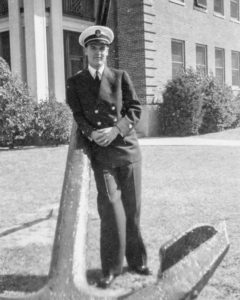
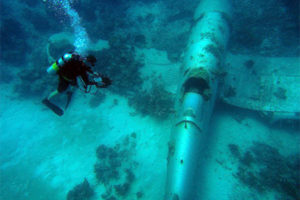
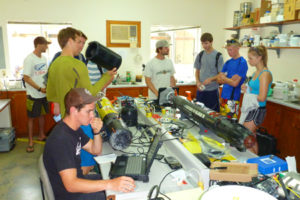

My 94 year old mom lost her husband, a fighter pilot shot down over the English Channel. His co-pulot and gunner were saved but he was never found. He was seen bailing out but his body never found. My mom is quite lucid and to this day she will never forget. She became a Rosey the riveted waiting to hear if he was alive. I am sure she would live to talk with you. She lives in Denver.
Hello Cindy, thank you for reaching out to us. Our Family Outreach team will be in contact very soon for more details that you may have.
Blue SKies,
dan
sorry about spelling errors. I am using my cell phone and it has a mind of its own. The name of the plane was “Billie the Kid” My mom’s name is Billie She was only married 1 year and was 19 when Baron went missing. She still has pictures of him and her love is undeniable. She married 2 more times but he is clearly the man still in her heart. Call if you want 206-819-2027.